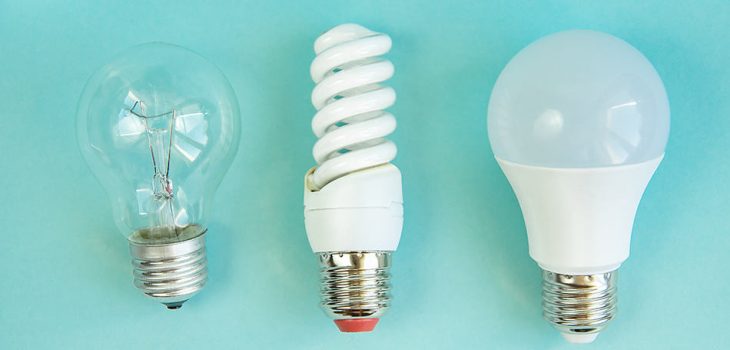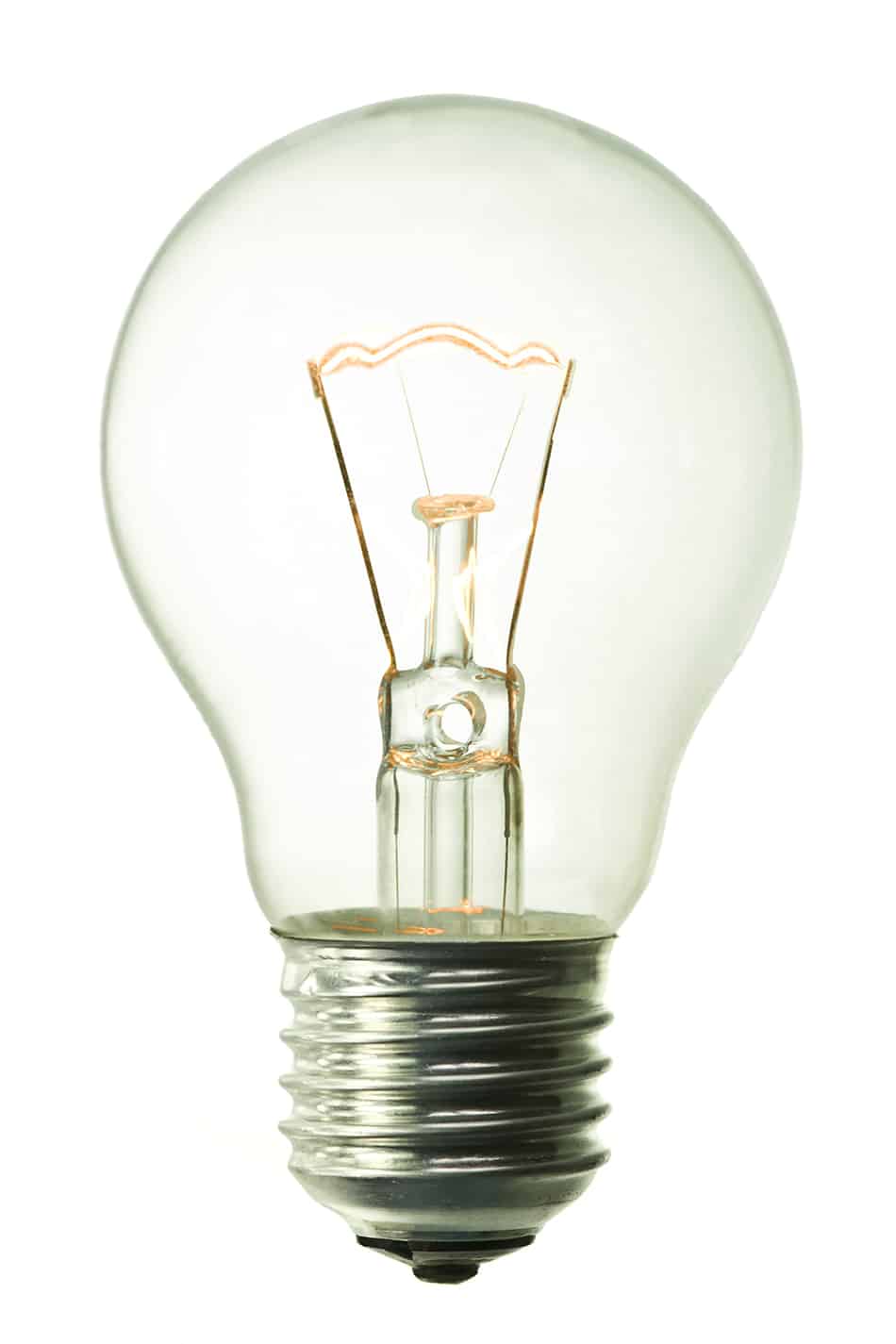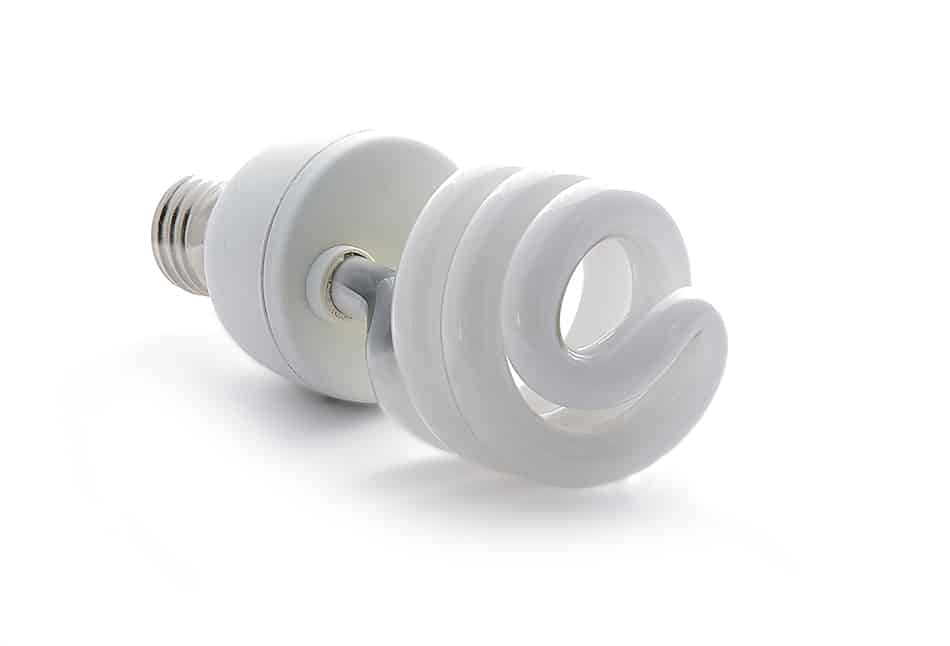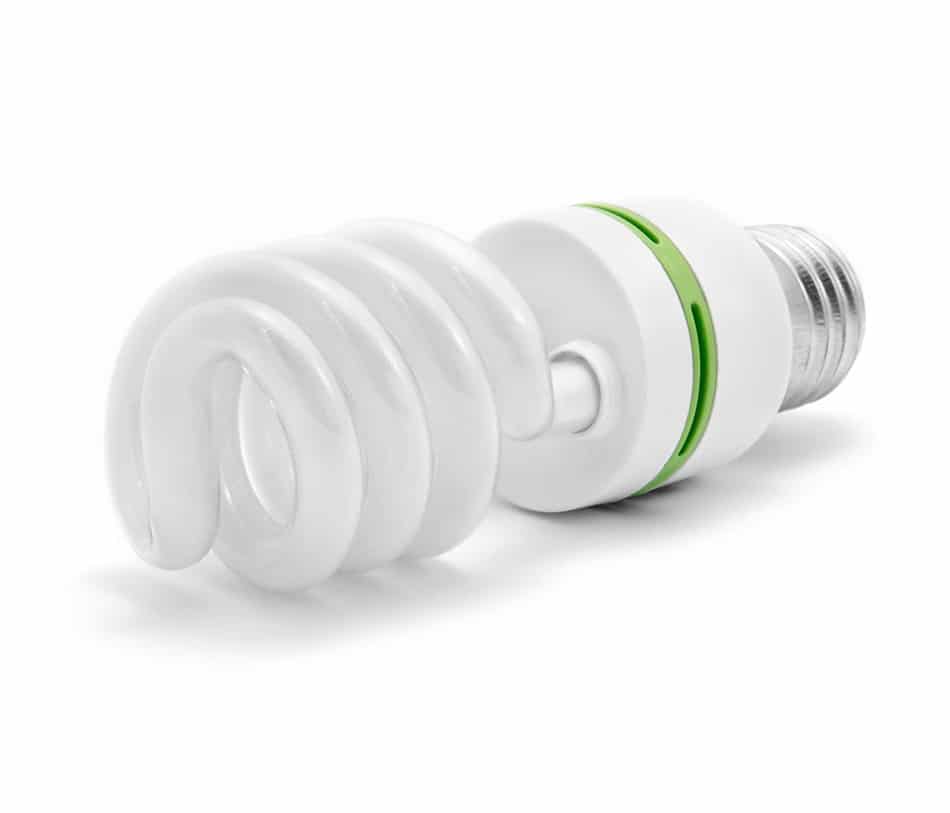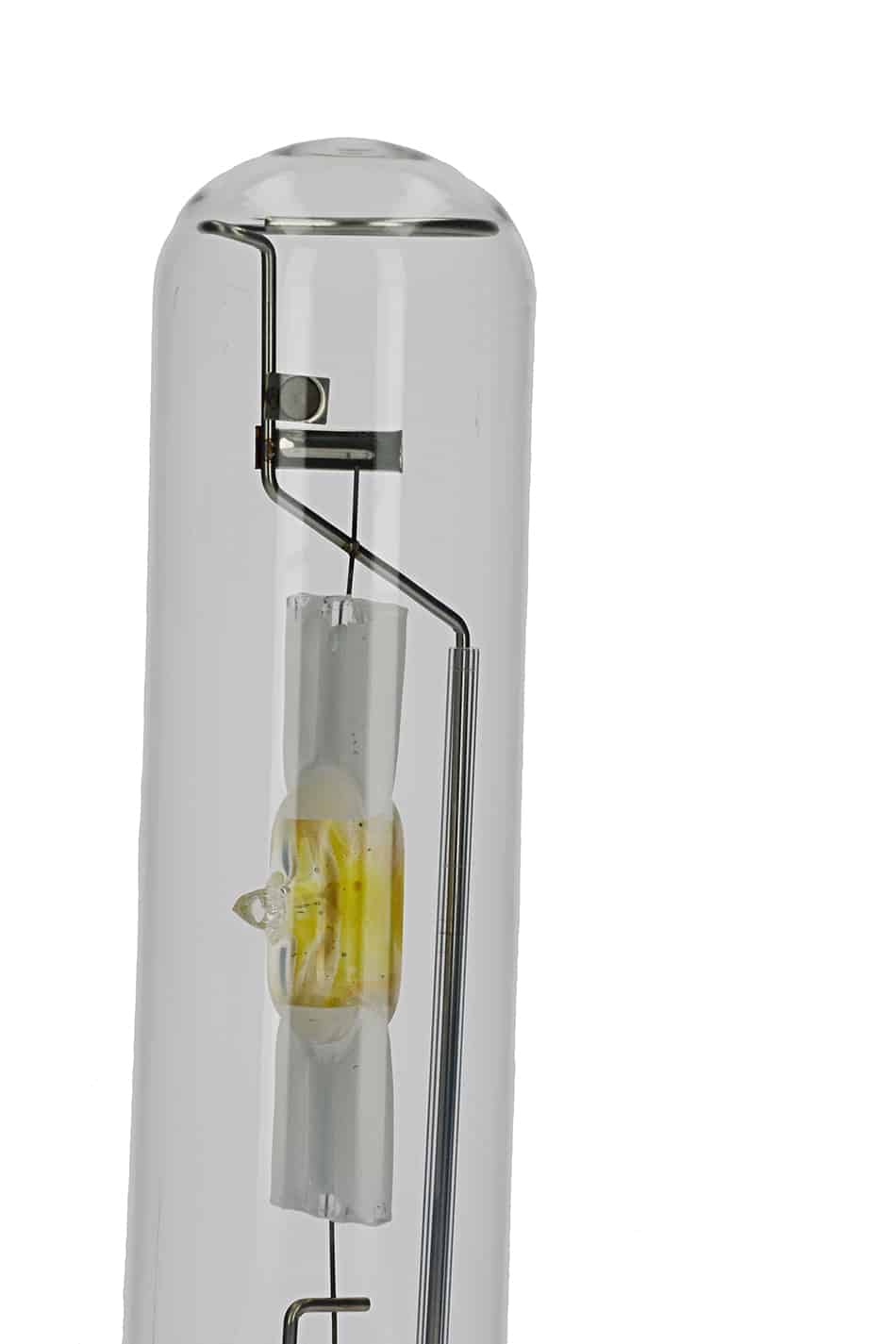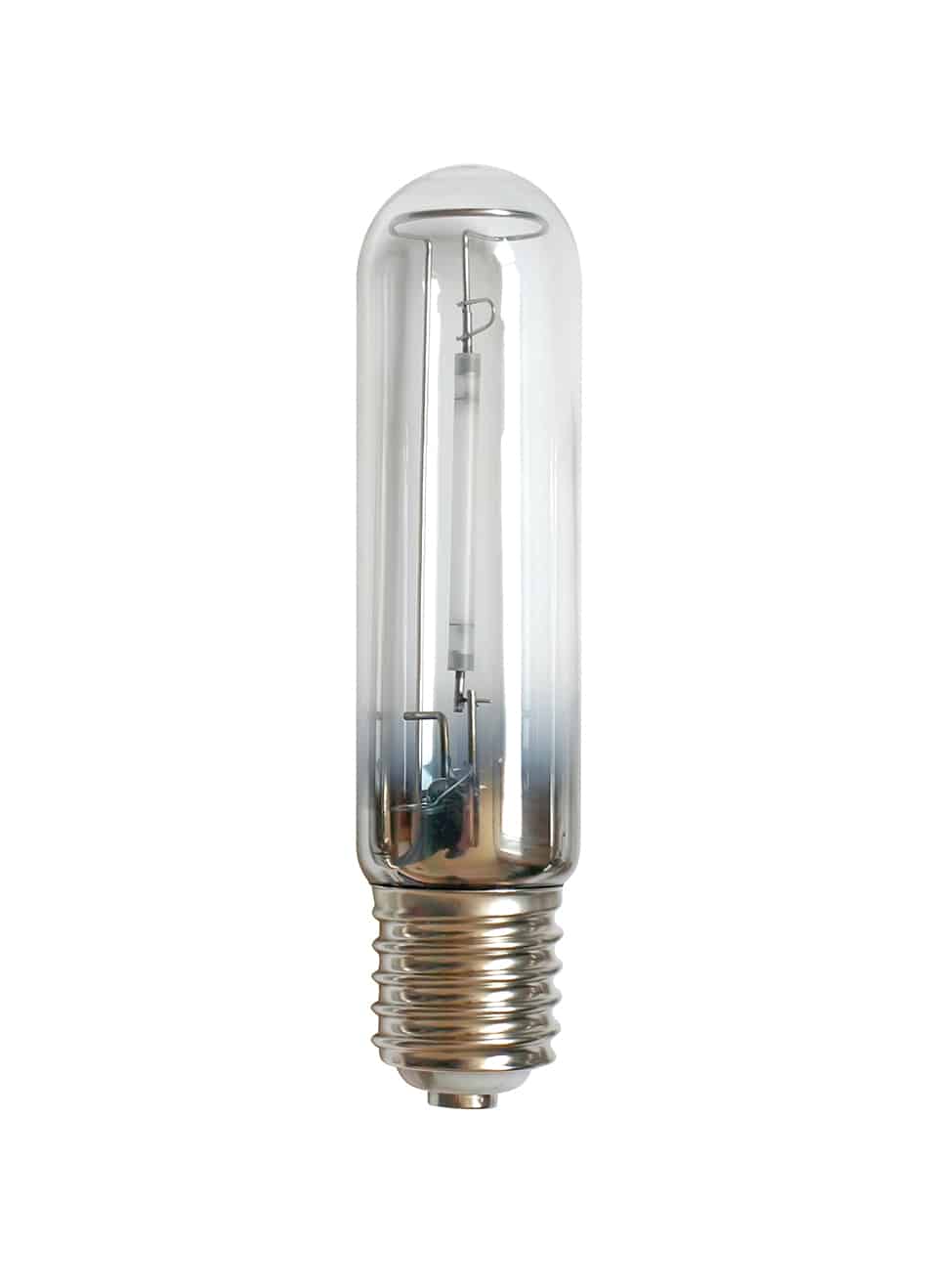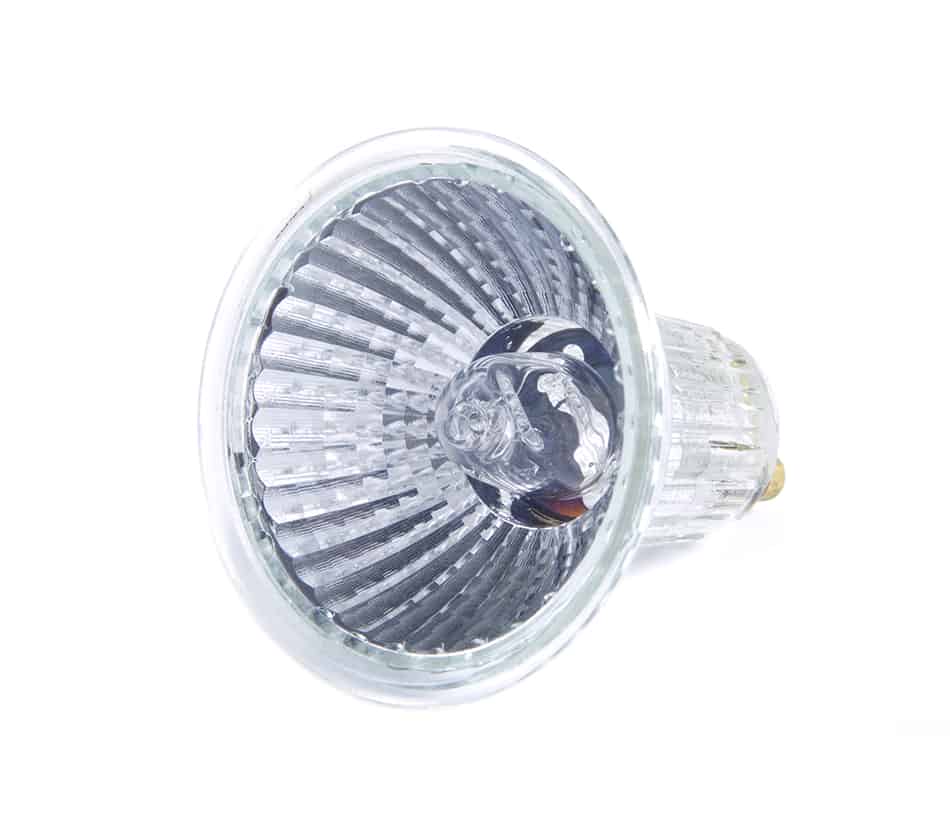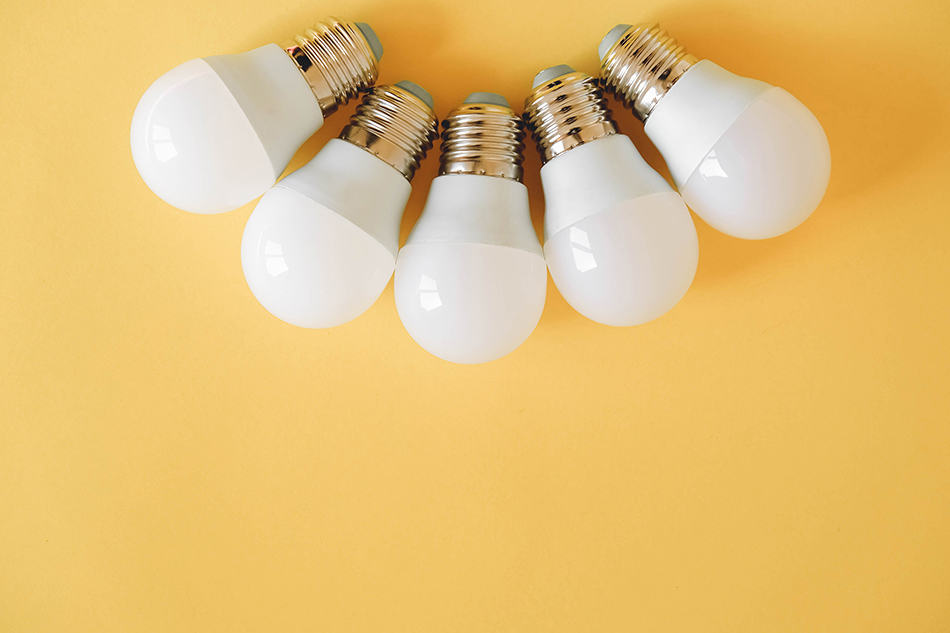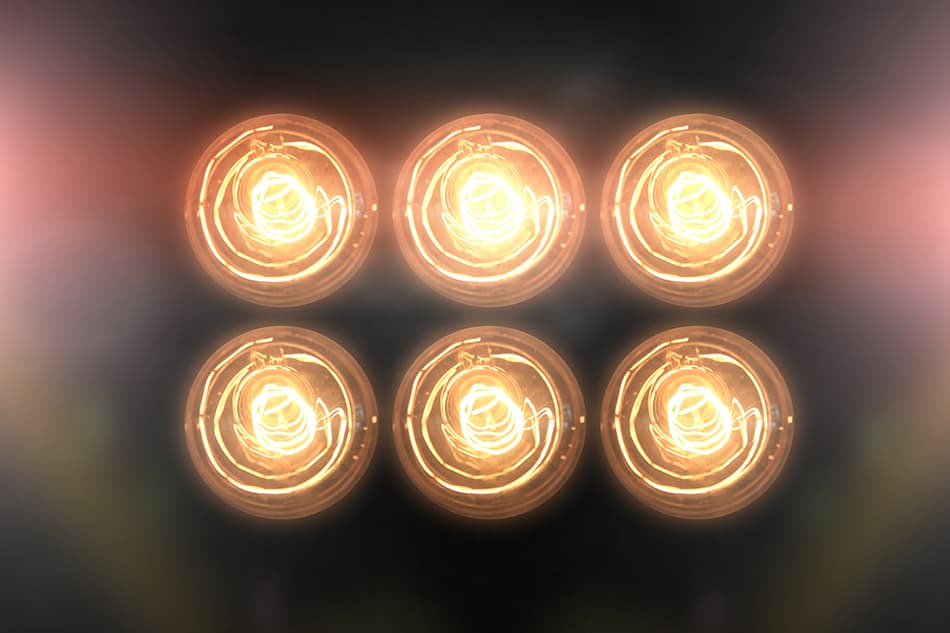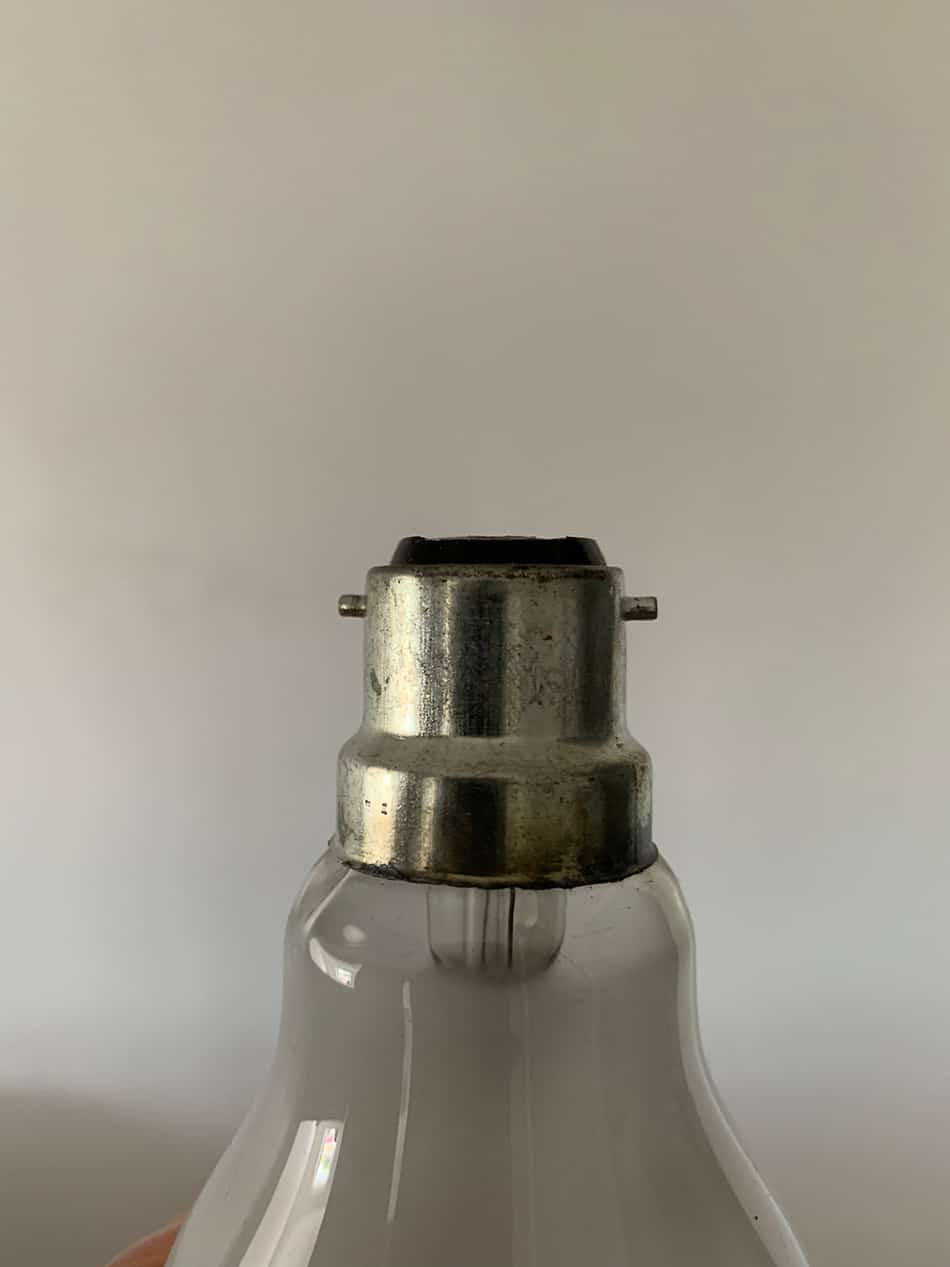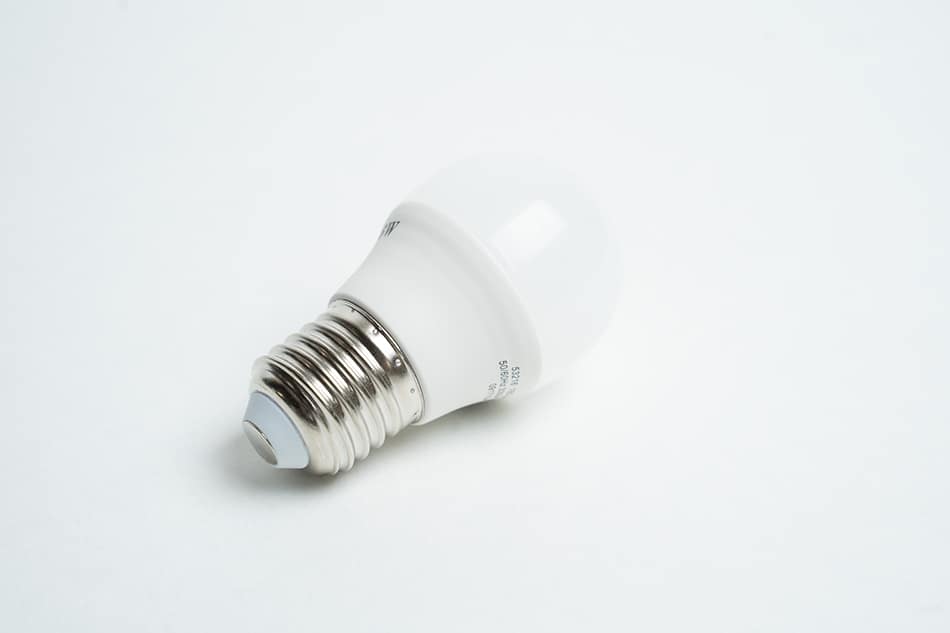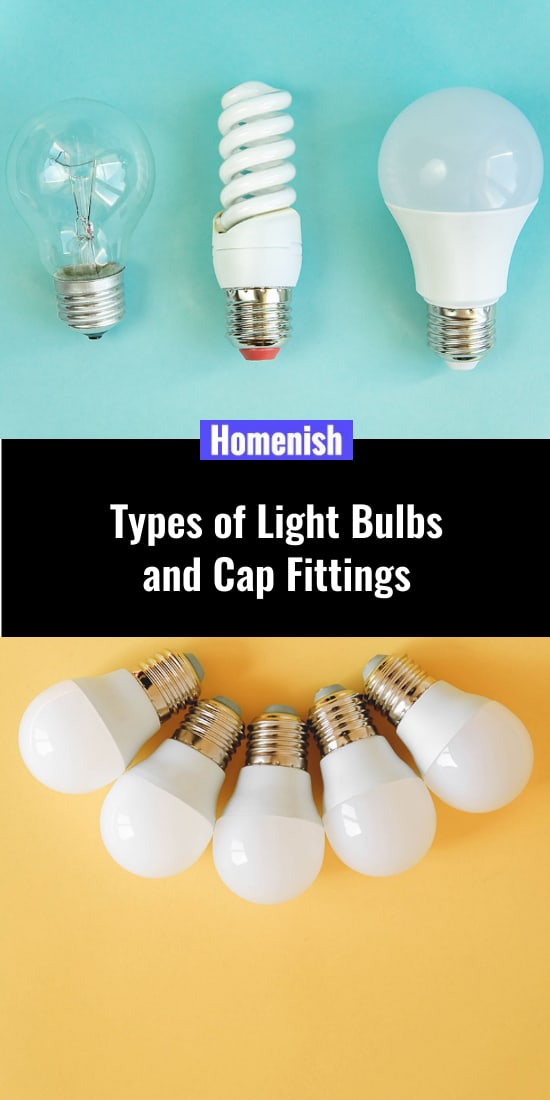If you’ve ever made a ‘quick’ trip to the grocery store to replace a dead light bulb, only to find yourself wasting what feels like a whole day perusing the lighting aisle, then it will come as no surprise that there are literally hundreds of different types of light bulbs. You may even have come home with the wrong lightbulb, having gotten confused by the many abbreviations used and the huge array of sizes.
To help you figure out exactly which type of light bulb is most appropriate for you and your situation, check out this easy guide and make sure you are never overwhelmed in the light bulb department again! By understanding the different types of light bulbs available, you could also save yourself time and money.
Table of Contents
1. Incandescent Light Bulbs
These common light bulbs are also known as filament bulbs because they work by a current which flows through the filament, which then illuminates the bulb. These filaments can be quite sensitive and will burn out over time, or can easily break if they suffer a small knock. These have been the most widely used type of bulb in homes for many decades, but they are losing favor due to alternatives, which are the result of new technology, offering a more energy-efficient and longer lasting light source. Incandescent bulbs typically provide between 600 and 1000 hours of light, which will be equal to around one or two years’ worth of use in an average household.
They are a leading cause of wasted energy in homes, as they consume more energy than any other type of light bulb. However, they do have their benefits. These types of light bulbs give instant bright light, which is warm and gives a complementary effect to interiors. They are also very inexpensive and can be picked up for less than a couple of dollars, which is why they remain popular among some people, though in the long run, they are likely to add more to your energy bill than slightly more costly alternative types of light bulbs. Incandescent bulbs are on the decline, as they have been banned from being manufactured in many countries, including the US and the UK. However, they are still widely available in many stores, but you can expect to see these being slowly phased out until they are no longer available for purchase.
2. Fluorescent Light Bulbs
Fluorescent light bulbs are a great energy-efficient alternative to incandescent light bulbs because they use significantly less energy. Some studies estimate that these bulbs use 80% less energy than incandescent bulbs, capable of cutting your lighting energy bill down to just 20% of what it used to be.
Fluorescent light bulbs work by passing an electric current through a tube filled with various gases, such as mercury. The reaction radiates energy and is turned into light by the phosphorus coating on the external layer of the bulbs. Though these bulbs are energy efficient, they can become damaged by being turned on and off too often. This can greatly reduce their lifespan, and so they are most common in places that need continuous lighting, such as hospitals and airports. If you have fluorescent lighting in your kitchen, it is best to avoid turning the light on just to make a quick visit to the room, and instead use a torch or a different light source.
When used correctly, fluorescent bulbs will last significantly longer than incandescent bulbs and can provide over 10,000 hours of light. They can be difficult to dispose of when they are done with, due to the mercury they contain, but some specialist recycling centers are able to recycle them.
3. Compact Fluorescent Light Bulbs
Also known as ‘CFL,’ which is an abbreviation of ‘compact fluorescent lamp,’ these are a type of fluorescent light bulb which are common for domestic use. They were introduced as an energy-efficient replacement of incandescent bulbs, which cost more to run and waste a lot of energy. As such, compact fluorescent light bulbs can be found in various shapes and sizes that have been designed to fit into the same place as an incandescent bulb previously fit. They look like a white tube, which has been bent or twisted to meet a specific shape.
As well as being extremely energy-efficient, compact fluorescent light bulbs do not emit much heat and therefore do not become hot to the touch even after being turned on for many hours. This might be a benefit to anyone with young children, who are worried that their ids might inadvertently touch a lit lamp and burn their delicate skin. These light bulbs work in exactly the same way as fluorescent lamps, and therefore can be difficult to dispose of due to their small mercury content. Some authorities have banned these types of light bulbs from being disposed of with regular waste, and instead need to be collected separately.
Compact fluorescent light bulbs are more expensive to buy than incandescent light bulbs, but over the course of their life span, they are expected to more than pay for themselves in energy saving. In fact, the average compact fluorescent light bulb will save the user at least five times its purchase price in energy, compared to an incandescent light bulb. Compact fluorescent light bulbs are expected to last between ten and fifteen times longer than an incandescent light bulb, which will also save you the cost and inconvenience of having to replace your light bulbs every year or two. They will use less energy over this extensive lifespan than an incandescent bulb will use in its short one to two-year lifespan.
Though compact fluorescent light bulbs are an impressive energy and money-saving alternative to incandescent light bulbs, they have fallen out of favor with some companies and homeowners since the introduction of LED lighting. These light bulbs can be found in various shapes and sizes, but they do have an unusual look about them, which will not be right for every light fitting.
4. Metal-halide Light Bulb
This type of light bulb operates through an electric or ceramic arc that contains vaporized gases, including mercury and metal halides such as iodine and bromine. The light produced by these bulbs is very bright, being as much as five times stronger than incandescent bulbs. For this reason, metal-halide light bulbs are commonly found in industrial settings, such as for overhead lighting in factories, or to illuminate sporting arenas and parking lots. They are also popular for use in security lighting as a deterrent to thieves and vandals, and as stage lighting in theatres.
Metal-halide lamps operate in a very similar way to mercury lamps; however, they produce a more natural white-colored light as opposed to the slightly blue-tinged light given off by mercury lamps. This makes them preferable to mercury light bulbs in many instances, though the color of metal-halide lamp light is not entirely reliable, and it can become tinted with blue hues over time. Metal-halide light bulbs do not reach their full lighting output capacity until they have been turned on for several minutes, as they take a little while to warm up.
5. Sodium Light Bulb
Sodium vapor lamps work by discharging gas. They are available in two types; high pressure and low pressure. The low-pressure sodium vapor lamps are very energy efficient, but they only produce a yellow-orange light, which isn’t suitable for use in most indoor settings like homes. They are predominantly used in street lamps and for other outdoor lighting.
High-pressure sodium vapor lamps are able to produce a broader selection of color when compared with the low-pressure kind, but in comparison to other types of lighting options, they still have a very limited spectrum. High-pressure sodium light bulbs are commonly used as grow lamps for growing plants indoors, and for large area outdoor lighting, such as in parking lots and sports arenas. In the mid-1980s, a sodium vapor lamp was designed which could produce white light; however, they have been found to have a high running cost, a short life span, and poor energy efficiency, so they are not widely used.
6. Halogen Light Bulbs
Halogen light bulbs are a type of incandescent light bulb which has been upgraded with improved design features. These bulbs work through a filament, in the same way as incandescent bulbs, but the filament is surrounded and sealed by a transparent envelope. The envelope is filled with a small amount of halogen and other inert gases, which is where this light bulb gets its name from. The filament combined with the halogen produces a chemical reaction, which helps to increase the clarity of the light emitted and also extend the lifespan of the bulb.
Halogen bulbs are slightly more energy-efficient than regular incandescent bulbs, estimated to use around 25% less energy. They have a typical lifespan of around three years, which is also superior to traditional incandescent light bulbs. However, by comparison to LED lamps or fluorescent light bulbs, halogen bulbs are inferior in terms of both energy efficiency and longevity. Halogen bulbs have a higher heat output than most other types of bulbs, which can make them a fire hazard. They run at higher temperatures than even traditional incandescent light bulbs and are typically smaller, so the heat is concentrated over a smaller surface area. As a result, many safety regulations require halogen bulbs to be fitted behind grills or recommend that they are avoided altogether, in favor of LED or compact fluorescent light bulbs, which do not get hot. Sadly, halogen bulbs have been the source of many house fires, where they have become too hot and come into contact with flammable items.
In spite of their drawbacks, halogen bulbs do have some positive aspects. They come in small sizes, which make them ideal for use in certain applications, such as in the headlamps of auto vehicles and in ovens. They also offer very bright light, and due to the fact that they do not contain mercury, they are easy to dispose of.
7. LED Light Bulbs
LED is an abbreviation for light-emitting diode. These light bulbs work as semiconductors, producing light when electricity is supplied to a negatively charged diode. Several diodes might make up one light bulb, depending on the strength of light you want to achieve. LEDs are the most energy-efficient type of light bulb you can get, so it’s no surprise that they are fast becoming the most popular type of light bulbs found in residential properties.
These light bulbs do have a higher outlay cost than traditional incandescent bulbs, and you can expect to pay in the region of $8 for a single bulb. However, LED light bulbs can easily last for a decade, so in terms of cost per year, they actually work out to be much more cost-effective than incandescent bulbs. The other benefit of their long life expectancy is that you won’t have the inconvenience of changing out bulbs every few years. LED light bulbs can be bought in dimmable types if you like to be able to customize the strength of your light, and they can also be bought in a wide range of colors.
LED light bulbs are commonly available in cool or warm white shades, but they can also be easily found in more unusual colors such as pink, red, green, purple, and blue. Unlike other types of light bulbs, LED lights produce colors without the use of colored filters. LED light bulbs are very rugged, and it would take a heavy bash to break them, unlike incandescent bulbs which are much more vulnerable to even gentle knocks. These bulbs emit very little heat, making them safer than traditional bulbs and much less likely to be the cause of a fire.
The only drawback of LED light bulbs is that sometimes the light they produce can be quite dim. In many cases, their light gets brighter over the course of an hour or two of being switched on, which isn’t always ideal if you need instant bright light. To overcome this issue, ensure you buy an LED light bulb with a higher light output.
8. Spotlight Bulbs
Types of Cap Fittings for Light Bulbs
Cap fittings are the base part of bulbs that have the attachment able to secure the light bulb to its permanent home, such as a lampshade, ceiling light, or desk lamp. For light bulbs used in residential settings, the most common types of cap fittings are:
A. Bayonet Cap
Bayonet caps are the most common types of caps found on light bulbs that are intended for use in homes. They work by using a push and twist-action to secure them in place. The standard size for this type of cap is 22mm, and it is sometimes known by the name ‘BC’ or ‘B22d cap’.
A.1. Small Bayonet Cap
The small bayonet cap works in exactly the same way as the standard bayonet cap but has a smaller diameter. The size of this cap is 15mm, and it goes by the other names ‘SBC’ or ‘B15d’. This type of cap is predominantly used in mains voltage lights, but it is sometimes also used for low voltage halogen light bulbs.
A.2. Pin Bayonet Cap
Also known as ‘BC B22d-3’, this type of bayonet cap is not commonly found in residential type lamps, and instead is found mostly in industrial settings on high-pressure mercury lamps.
B. Edison Screw Cap
This light bulb cap is named after its inventor, Thomas Edison, and the fact that it works by simply being twisted to screw it into place. This type of cap is used across the world, but it is most prevalent in the United Kingdom and other countries in Europe. The standard size for the Edison screw cap is 27mm, a measurement that refers to the diameter of the light bulb base. It is known as ‘ES-E27’ or simply ‘E27’, and is the most common type of fitting for 240V light bulbs in the UK.
B.1. Small Edison Screw Cap
This smaller version of the Edison screw cap is also known as ‘SES-E14’. It has a diameter measurement of 14mm and is mostly used for more decorative lighting settings, such as in chandeliers. These types of light bulbs can also be found in appliances such as refrigerators, and are most prevalent in the United Kingdom and other European nations.
B.2. Candelabra Edison Screw Cap
Also known as ‘E12’, these screw caps have a diameter of 12mm. They are most commonly used in the UK and Europe, predominantly in candelabras and children’s night lights. You may also find them in bathroom light fittings which hang over the top of a mirror or are integrated into bathroom over-sink cabinets.
B.3. Lilliput Edison Screw Cap
This is a very small type of lightbulb, which is also known as ‘LES.’ These bulbs are used in various applications, such as in panel lighting, or in model buildings. If you are a fan of building model railways or similar structures, you will be familiar with this type of light bulb to bring life and light to your creations.
B.4. Miniature Edison Screw Cap
Measuring just 10mm in diameter, these miniature screw light bulbs are best for flashlights and outdoor lanterns. Despite their tiny stature, they tend to be quite robust and rarely need replacing.
B.5. Giant Edison Screw Cap
Also known as ‘GES,’ these light bulb caps have a diameter measurement of 40mm. They are very large, and therefore predominantly used in outdoor settings for decorative lighting, and typically have a high output for impressive brightness.
C. Capsule Lamp Cap
Light bulbs with capsule caps are typically halogen or LED, and very small. They are most commonly found integrated into appliances, such as in cabinet lighting and cooker hoods. These caps have two protruding pins, which are varying widths apart. It is this measurement between the two pins that is what identifies the different types of capsule caps and ensures one type of light bulb is not incorrectly installed in the place of another. Popular types of capsule lamp caps are the G4 and G9. The G4 has a 4mm distance between the center of each vertical pin and is used for 12v light bulbs. The G9 has 9mm between each pin, which is rounded and ‘U’ shaped. These bulbs are solely used for 240v lights.
D. Spotlights
Spotlights are a popular feature in modern homes, most commonly utilized in kitchens and bathrooms for evenly distributed, natural-looking light. These will take the form of either LED or halogen light bulbs, which can be pushfit or twist and lock. They come in different sizes, which can be identified based on the measurement between each pin. The GU10 cap has a measurement of 10mm from the center of one pin to the center of the other pin. It is the most popular size of cap for spotlights in the UK and is available in a wide variety of different colors and voltages. It works with a twist and lock mechanism. Another popular type of cap for spotlights is the MR16, which is also sometimes known as the GU5.3. It has a measurement of 5.3mm from pin to pin and works by push-fit.
E. Linear R7
This type of cap is for linear halogen lamps, which are popular in floodlighting and strip lights. The bulbs have a long and narrow shape, and come in two sizes; 78mm and 118mm. R7’s are held in place by springs at either end of the light bulb, which makes them very easy to remove and replace. Each end of the bulb has a 7mm cap that pushes against the springs to keep it secure. They typically have a lifespan of 3,000 hours’ worth of light, but this can be reduced if the light is turned on and off too frequently. You should also avoid touching the exterior of the bulb, as the oils on human skin can cause damage and also reduce the lifespan of the lamp.
